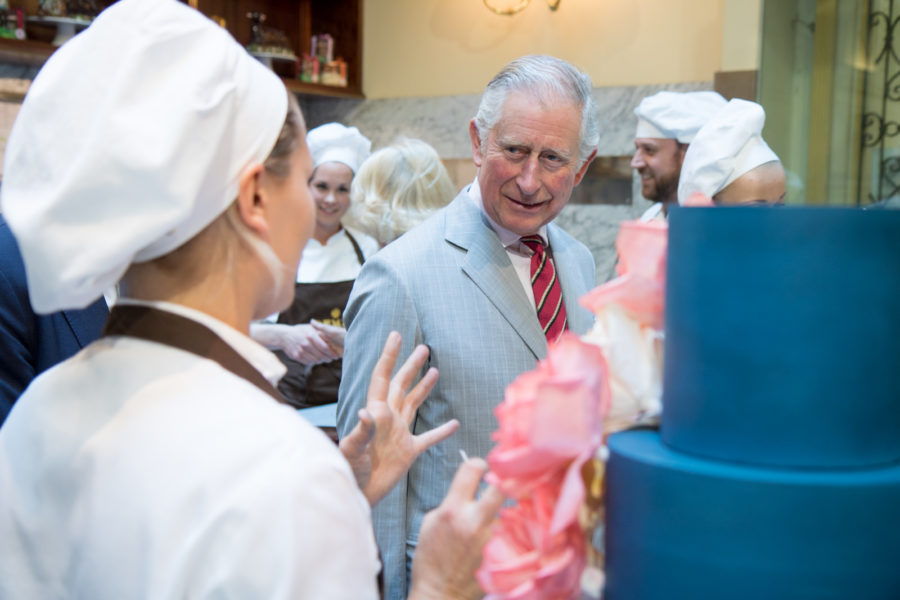His Royal Highness The Prince of Wales and Her Royal Highness the Duchess of Cornwall enter a room in Vienna’s magnificent Hofburg Palace as guests of the President of Austria, Dr Alexander Van der Bellen and the First Lady, Mrs Doris Schmidauer
Around 70 journalists are present to record the event. A flurry of camera flashes goes off.
Further engagements for Their Royal Highnesses include meetings with Chancellor Kern; a state banquet; calls at the Jewish Museum, the Musikverein and Café Demel; a visit to the Austrian Integration Fund; discussions at the OSCE on modern slavery and tolerance (see my colleague Sian MacLeod’s blog); and a visit to the Spanish Riding School.
A Royal Visit is an unmatched opportunity for two countries to deepen, highlight and explore long-standing relationships. Every element is planned in advance, with invaluable help from host authorities: from transport and security through to content and objectives. Even small details are important and require careful consideration and discussion.
I was struck by the huge amount of communication which took place throughout the programme. Whether it was the private discussions which take place in 1:1 meetings; more formal set-piece talks with a team of people on each side; or meeting individuals or groups of people at events on the programme, the exchange of information and ideas was constant.
One element of that communication is through the media. For the Royal Visit to Austria, our efficient and helpful Austrian hosts accredited 170 journalists and photographers representing a wide range of Austrian, British and international media organisations. The Bundespressedienst worked with us to arrange fixed points to give accredited media representatives a chance to record the maximum number of events. We backed this up with updates on our Twitter accounts @leighturnerFCO, @UKinAustria and @UKOSCE, working closely with the excellent @ClarenceHouse.
My advice: follow these accounts immediately.
But for all the technology, direct human interaction remains irreplaceable. That is why the programme included opportunities to meet a wide range of people: apprentices at Café Demel; young refugees and Holocaust survivors at the Jewish Museum; schoolchildren and musicians at the Musikverein; sustainable producers at Buschenschank Obermann (eco-restaurant); grooms at the Spanish Riding School; NGOs, religious leaders and international civil servants at the Hofburg; counsellors, desk staff and customers at the Austrian Integration Fund; and many others.
It all adds up to a rich mix of humankind, all with a story to tell and experiences to exchange with our visitors. By the end of a wonderful visit by Their Royal Highnesses I felt I’d seen a master-class of communication in action.
Later I thanked my brilliant team in Vienna for delivering an outstanding programme; and the countless Austrian colleagues without whom nothing would have been possible. That’s communication, too.

